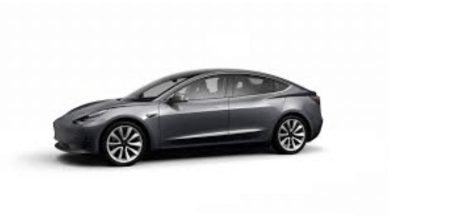Today, I want to compare Tesla (TSLA) and General Motors (GM), two of the highest-profile automakers in America. But before I break out the TSLA vs. GM comparison, I want to discuss a couple more niche, high-end public car companies.
Aston Martin came public on the London exchange this week, and is now valued at $5.6 billion, which some commentators are saying is below expectations, given the company’s long association with James Bond. But that disappointment will soon pass, as analysts take a look at what the company will do with the money.
Long term, I hope that the influx of cash to the company—which has been bankrupt seven times in 102 years—will put it on solid financial footing and enable it to better serve the world market for high-end cars.
Certainly, it’s a recipe that’s worked for Ferrari (RACE), which was spun off from Fiat Chrysler in 2015 and has enjoyed growing revenues, growing earnings and a rising stock since.
But those are two high-end niche automakers, and the market I want to talk about today is the mass market, which has traditionally been served well by General Motors (GM) and is now being entered in a big way by Tesla (TSLA).
[text_ad use_post='129622']
Both GM and Tesla, incidentally, are valued at $49 billion today.
But GM is a company that’s been shrinking (roughly 2% per year) since 2014, while Tesla is a company that is still growing fast. Revenues in the quarter ended June 30 were up 43% from the year before.
Now Tesla, admittedly, is not a mass-market manufacturer yet, not with its bare-bones Model 3 starting at $49,000 and its fully loaded larger models going for more than $100,000.
But Tesla is definitely heading in the right direction. In fact it’s rapidly converting Toyota Prius owners into Model 3 buyers; the most common trade-ins for Model 3s are Priuses.
And before long, Tesla will roll out a pickup truck, taking aim squarely at General Motors’ biggest meal ticket. GM’s full-size pickups, the Chevrolet Silverado and the GMC Sierra, currently yield a pre-tax profit of $17,000 for every vehicle sold.
But when Tesla’s pickup arrives, with greater torque, acceleration, fuel efficiency and lower maintenance costs, the battle will be interesting.
So let’s take a look at the stocks by comparing other aspects of TSLA vs. GM.
General Motors (GM)
Since it was bailed out by U.S. taxpayers a decade ago, GM has grown revenues 40%, though as mentioned above, the growth stopped years ago. And the market for the stock reflects that, with the stock’s price/sales ratio (PSR) now at a lowly 0.34. Tesla, by contrast, has a PSR of a lofty 3.7, more than 10 times GM’s value.
The market expects great growth from Tesla, but not from GM.
But GM is cheap! In fact, its price/earnings ratio (P/E) is just 5, and that’s rock-bottom territory.
Also, GM has been making serious inroads into self-driving technology, to the extent that Honda just committed to investing $2.75 billion into GM’s (self-driving) Cruise division so it can take advantage of the knowledge.
Furthermore, GM pays a fat dividend of 4.5%, so even if the stock goes nowhere, this is still a stock that can help you beat the insidious forces of inflation.
Last but not least, GM stock has fallen from 44 to 34 over the past four months and is now closing in on its 200-day moving average—the last time it did that was in May 2017, just before the stock climbed from 31 to 44.
Tesla (TSLA)
As to Tesla, the stock is admittedly in La-La Land when it comes to valuations. But as I’ve told my readers many times, valuations are irrelevant when dealing with fast-growing companies.
And Tesla CEO Elon Musk has just been hit with a $20 million fine for irresponsible tweeting—and stripped of his Chairmanship—all of which was very heavily publicized.
But young, fast-growing companies often have growing pains as they struggle to evolve their management structures, and I believe Tesla will soon put this ugly chapter behind it.
Far more important, in my opinion, is that the company continues to grow fast by increasing output of its vehicles while decreasing costs, so that it can eventually start posting regular profits.
Certainly, the cars are first-rate, even revolutionary, as anyone who’s ever driven one can attest.
And the fact that Tesla remains well ahead of all the competition means it is developing a brand identity that can evolve into something like, “The Cars of the Post-Petroleum Era” or “The Best Electric Cars in the World.”
Tesla has other advantages as well.
All its cars are sold direct by the company at list price, so there’s no wasted time haggling with untrustworthy car salespeople.
And Tesla boasts a nationwide supercharging network that enables very fast recharging on long road trips, something no other manufacturer is even close to providing. (They’re just too wedded to their internal combustion engine programs.)
TSLA vs. GM: Which Stock Do I Like?
It’s obvious that I like Tesla long term; I’ve had it in my portfolio in Cabot Stock of the Week since late 2011, and I still think it has great long-term potential.
But I also like GM today as an undervalued stock that is trading near the low end of its range and could easily climb 20% in the year ahead, while paying that nice fat dividend.
You can read more about both stocks every week in my Cabot Stock of the Week.
To learn more, click here.
[author_ad]





